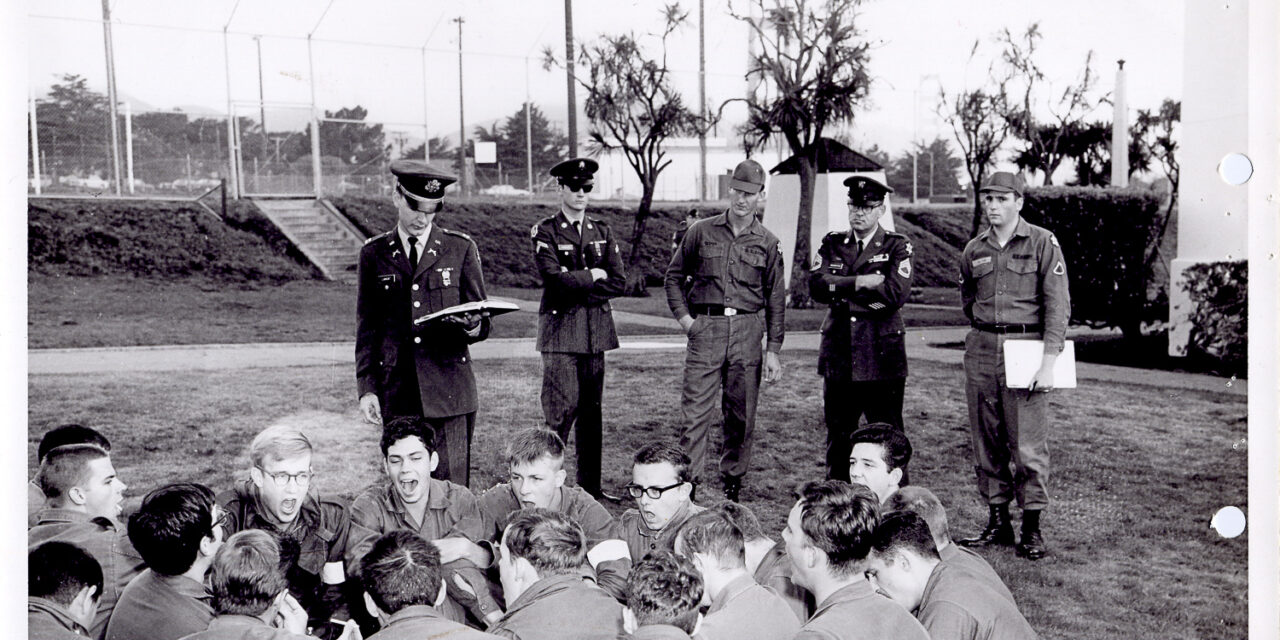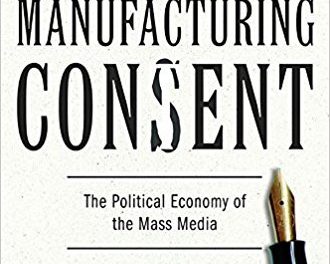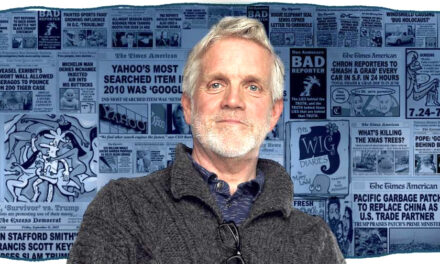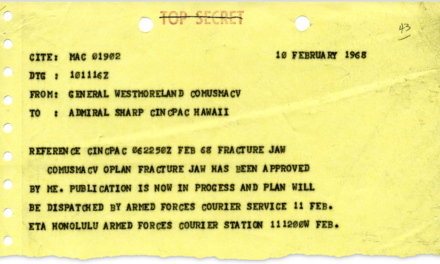A soldier being court-martialed is entitled to an Army defender plus “counsel of choice.” Fourteen of the 27 Presidio stockade prisoners who had been read the mutiny article during their sit-down in the Presidio stockade yard on the morning of October 14, 1968, would choose Terence Hallinan to represent them. Three prisoners —Nesrey Dean Sood, Ricky Lee Dodd, and Larry Zaino— hired other civilian defense lawyers. The parents of Ed Yost and John Colip hired lawyers from their home towns. Larry Reidel chose Capt. Brendan V. Sullivan, Jr. to team with Capt. Emmitt Yeary, the lawyer assigned him by the Sixth Army Judge Advocate General’s office. Louis Osczepinsky was satisfied with his lawyer from the JAG office, Capt. Joseph Choate.
The five ensuing trials began in late January ’69 with the court martial of Reidel and Osczepinsky, and ended in early June with Hallinan’s clients. Command influence had been obvious even during the pre-trial investigation required under Article 32 of the Uniform Code of Military Justice. It was conducted by Capt. Richard Millard, a UCLA law school graduate who had served a year in Vietnam. The stockade commander, Capt. Robert Lamont, a squeaky-voice 25-year-old, told Millard the truth—and that he didn’t have the nerve to testify to it and incur the wrath of the higher-ups! Lamont said he had “almost begged” Provost Marshall John Ford and the Presidio’s commanding general to limit the prisoner population and assign trained confinement officers as guards instead of military policemen. Ford had responded by telling Lamont to familiarize himself with the UCMJ’s mutiny article. In other words, the brass knew that conditions at the stockade were deplorable, but would treat any protest as a capital crime.
Millard disappointed and angered the higher-ups by advising that the Presidio sit-down was not a mutiny according to the UCMJ statute. A “passive” mutiny requires joint disobedience of orders and an intent to override military authority. “If willful disobedience in concert means mutiny,” Millard reasoned, “then you have a redundant statute. ‘Intent to override authority’ has to add something.'” Millard’s analysis made each prisoner’s state of mind an important factor in what crime to charge him with.
In his report to the Judge Advocate General, Millard recommended that Larry Reidel and Louis Osczepinsky be separated as unfit (psychologically incapable of forming an intent to override military authority); that John Colip and Ed Yost be tried at a special court-martial for willful disobedience (maximum sentence six months); and that Ricky Dodd and Larry Zaino be given “less than honorable discharges” or tried by special court martial. Millard noted in his report, “There is ample testimony to show that the conditions in the stockade prior to 14 October were not up to the standards we should expect. Of special significance in this case is the fact that the DD 510 procedure for expressing grievances as implemented prior to the demonstration was shoddy and inefficient… These factors should be considered as mitigating circumstances.”
By the time Millard’s report reached Sixth Army Commanding General Stanley Larsen, it was buried under letters from three higher-ranking legal officers, each misrepresenting its contents and recommending that the prisoners be charged with mutiny. Colonel Garnett, the Judge Advocate General, advised Larsen: “From the evidence that the noise of he chanting and singing increased when Captain Lamont attempted to address the group, an intent to override military authority may be inferred. The same inference may be drawn from the statement of one of the group that they would not obey any orders until they saw their attorney. When the unlawful concert of action is established, the act of one may be used as evidence against all.”
Knowing his advice was being ignored by the higher-ups, Millard considered violating the chain of command to seek out Larsen and say, “I’ve heard that you’re a great guy and a fair commander. You must be getting some lousy legal advice to be going ahead with ‘mutiny.'” But he didn’t.
At the opening court martial, Major Terry Chamberlain, an Army psychiatrist who had interviewed stockade prisoners in the summer of ’68, described Reidel as a “sociopathic personality” who, particularly in the wake of a fight, would have “no control over his behavior.” (Reidel had broken another prisoner’s jaw on the morning of the sit-down.) Osczepinsky, he testified, was also a sociopath and had “an impaired capacity to form a specific intent.” Their Army defense lawyers, Brendan Sullivan Joe Choate, thought they were about to prevail. But the proceeding was abruptly recessed by the law officer, Lt. Colonel Robinson who convened a special panel of psychiatrists to decide whether or not the two prisoners could “adhere to the right,” i.e., whether they were sane or not. He said he wanted a yes or no, and “impaired ability” meant maybe. Sullivan expressed his outrage over the delay in a letter to Gen. Larsen, which he entered into the record.
During the recess the court martial of Private Nesrey Sood was held. The case against Sood was almost a rerun of the case against Reidel and Osczepinsky —as the six court members (jurors) from the suspended proceeding would realize by reading the San Francisco papers. Sood was defended by the ACLU’s Paul Halvonik and Capt. Emmitt Yeary. He was in the Army as a result of bureaucratic error. When he got his draft notice he was working as a warehouseman in Oakland, married with three young children. At the induction center he was told that it was a blatant mistake that would be corrected when he reported for basic at Fort Ord. But there he was told it was too late, he was in the Army. He was stationed in Alaska as a mortar instructor. After an unsuccessful effort to bring his wife and children there, he started drinking and getting into fights. He was ordered to Fort Lewis to pick up an unsuitability discharge. He went to LA first to see his family. MPs picked him up and on Saturday Oct. 12 brought him to the Presidio stockade en route to Fort Lewis. Monday he joined the demonstration.
Paul Halvonik emphasized the justice of the prisoners’ grievances and that Sood was frightened by the killing of Richard Bunch, which everybody was talking about when he arrived at the stockade. “There’s not a bit of evidence that this man intended to override military authority… When tapped on his shoulder he walked in, he finished his demonstration. He at no time willfully disobeyed an order.”
For the prosecution, Captain Dean Flippo (who would go on to be District Attorney of Monterey County for seven terms, retiring in 2018) argued, “It is the government’s contention that both a passive and a violent mutiny are equally serious… Gentlemen, if you will, it is an attack on the system. And the attack on the system of order and discipline in authority may be accomplished in many ways.” He called for a harsh sentence. “A chief consideration for you is deterrence,” he told the court. “I don’t think I need to say any more.”
Six senior officers took less than an hour and a half to find Sood guilty of mutiny and sentence him to 15 years hard labor. The worst fears of Sullivan and Choate had been realized. The Chronicle had run a banner headline that said “15 YEARS FOR MUTINY.” The Examiner’s said “PRESIDIO GI GIVEN 15 YEARS FOR MUTINY.” When the Osczepinsky-Reidel trial resumed, the court members —all senior officers— acknowledged seeing the headlines but claimed they had in no way been influenced. They then found both defendants guilty of mutiny and sentenced them to 16 and 14 years respectively. “Do you think it was a coincidence their sentences averaged out to 15 years?” Brendan Sullivan asked the reporter from Liberation News Service (me).
Whereas Capt. Millard thought Gen. Larsen had been badly advised by his Judge Advocate General (who imagined that AWOLs might avoid San Francisco if the Presidio stockade got known as a hell hole), Terence Hallinan thought the Presidio JAG officers had been giving Larsen exactly what they knew he wanted. “Larsen came back from Vietnam a failure, like his friend Westmoreland,” Hallinan would say at a rally in San Francisco March 15. “And now he thinks he can restore his reputation by running a pacification program on Bay Area GIs… The Army is watching to see whether the American people will stand for it. They could call off this travesty of justice with a snap the fingers but they don’t want to. They want to see if it’ll go over. And just wait: if they can railroad these 27 kids, all GIs can kiss their rights of free speech and free assembly goodbye.”
When Gen. Larsen had been Chief of all Army forces in South Vietnam, he had advocated an extension of the war into Cambodia. “We have enough evidence from prisoners and other sources,” Larsen said at a well-publicized press conference in May 1966, “to satisfy us that at least four and probably six North Vietnamese regiments are there.” Hallinan figured (as did MSgt Don Duncan and other antiwar analysts) that Larsen was advocating “hot pursuit” on behalf of his immediate superior, Gen. William Westmoreland. When the State Department denied any knowledge of Larsen’s “evidence,” Westmoreland quickly dissociated himself from the idea. Looking back on the episode, Hallinan said of Larsen, “Bombing Cambodia was a trial balloon for Westmoreland, and pressing mutiny charges at the Presidio was a trial balloon, too.”
It was only a surmise, of course. But two weeks before the mutiny trials got underway —three months after the prisoners’ sit-down— Gen. Westmoreland had been given a tour of the recently renovated Presidio stockade. He clearly had a strong interest in the case.
For almost all the Presidio “mutineers,” their non-violent sit down in the stockade yard on Monday morning, October 14, 1968, was not about Ending the Vietnam war; it was about overcrowding, denial of their rights, and the shotgun killing of a fellow prisoner. Ending the Vietnam war was not on the list of grievances and demands that Walter Pawlowski began jotting down as the men spent all day Sunday discussing and planning their action. Terence Hallinan had arrived at 10:20 a.m. and met in a small office with his client, Randy Rowland, and then a few other prisoners, including Pawlowski and Keith Mather. Hallinan repeated his advice that a nonviolent sit-in would be an effective and relatively safe way to draw attention to their plight. He said he believed in their cause and would represent them for free. He promised to notify his press contacts. After two hours, as two MPs escorted Hallinan away, he was spelling his name and telling the prisoners to write him or his partner Jerry Glass at 345 Franklin Street if they needed representation.
The plan was to break formation at 7:30 a.m. and sit down in a circle on the one patch of yard clearly visible to arriving vehicles. They planned to flash the peace sign to emphasize their nonviolent intent to the media. But no newspaper or TV reporters showed up. The only cameramen came from Sixth Army, a video was shot for the higher-ups to review when deciding what crime to charge. A series of 8×10 black-and-white glossies depicting the sit-down would be introduced by the prosecution at each of the court martials as evidence of a “passive mutiny.”
The third court martial was of John Colip, one of the five defendants who had finished high school. His parents hired Ron Sypnicki, a Sacramento attorney who had defended them in a personal injury suit. Sypnicki’s strategy was to show that Colip, who had been on the fatal work detail on Oct. 11, had been disconcerted by the sight of Richard Bunch lying dead. That he had been misled into thinking that the press would attend the demonstration and that he could give them his firsthand account of the shooting; and that he had been misinformed —by Terence Hallinan via Randy Rowland— that a nonviolent sit-down would not violate military law. Sypnicki made much of a lieutenant’s testimony that when the prisoners were strip-searched back in cell block 3, some of them had Hallinan’s phone number inked on their wrists.
Colip testified that he had first met Rowland Saturday night as the newcomer was describing the GI-led peace march. The next morning Colip said that Hallinan —”Terry is what they call him in the stockade”— met with Keith Mather and Walter Pawlowski, among others. Pawlowski then told him, Colip said, that whoever wanted to would sit down on the grass the next morning and sing songs. Someone —Colip thought it was Mather— added that the press would be there to take the prisoners’ statements. “I thought it was necessary to give my eyewitness report.” Colip had also been told that if the demonstrators stood on Article 31 (the Bill of Rights provision of the UCMJ) and remained nonviolent, they would not face serious reprisals. The source of this information, according to Colip’s lawyer, was Terence Hallinan.
Sypnicki concluded, “So he gets all this good advice. And he’s not relying on Pawlowski or Rowland, he’s relying on the source that they tell him they got it from. They’ve talked to this magic name ‘Hallinan’— and for some groups down there it is magic. And so, fine, he’s going to sit on the lawn, too… And then he’s told that everybody who does gets free legal counsel. And, gentlemen, I’m not free, I’m not Hallinan —free legal counsel! I think we have shown there are leaders and followers in this thing. We’ve all been around. We all know some of what takes place. I ask you not to make a martyr and give the person in San Francisco something else to holler about. The biggest part of this whole thing is someone can start this, using a bunch of kids, and when a reaction takes place and there are martyrs, he’s again a hero. He would make no headlines and no real publicity if these boys were convicted of a breach of the peace or a lesser included offense.”
Hallinan’s comment to a reporter: “To think it would take an outside agitator to get people upset about the conditions at the Presidio stockade! That’s the oldest one in the book!” But Kayo had suggested the sit-in to prisoners as an appropriate response and offered to defend anyone who took part. Sypnicki’s defense of John Colip was not inaccurate, and his warning to the court that a mutiny conviction could turn into a PR disaster for the Army was prescient.





